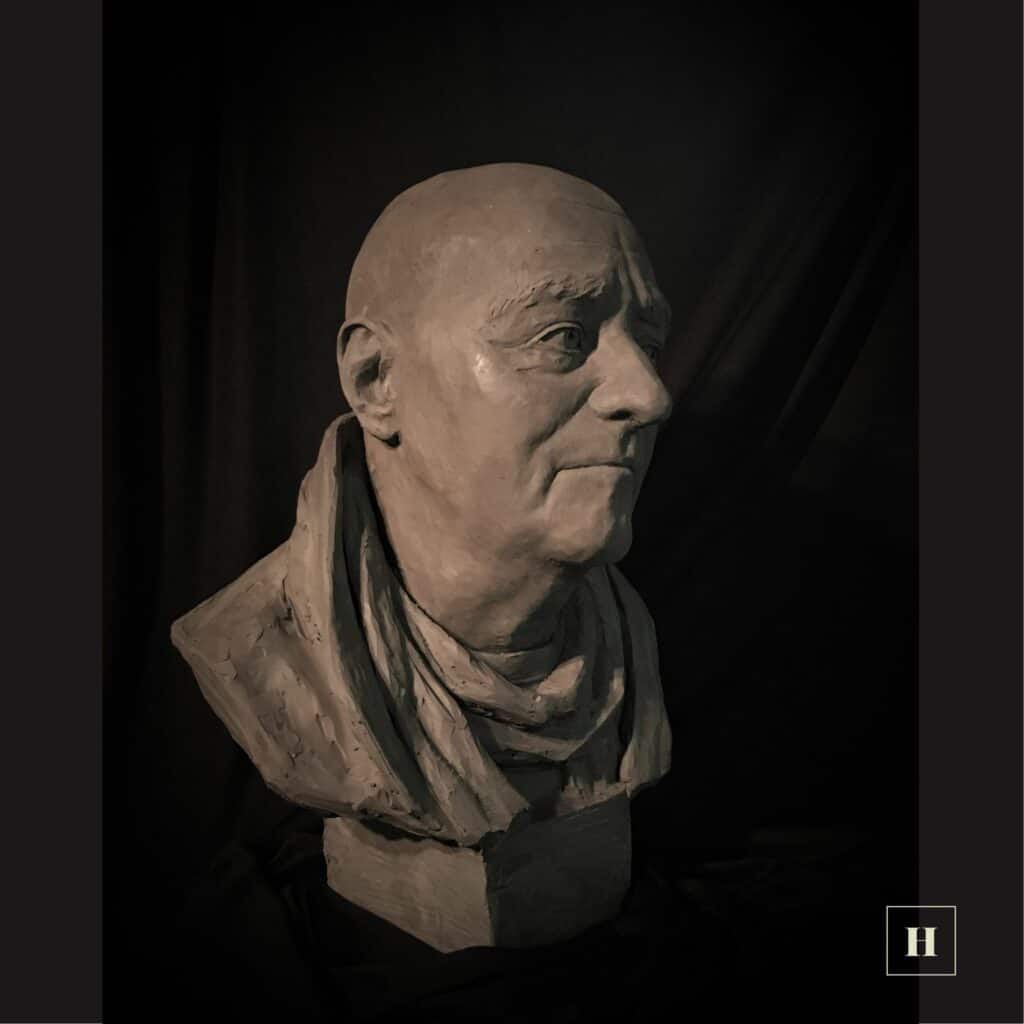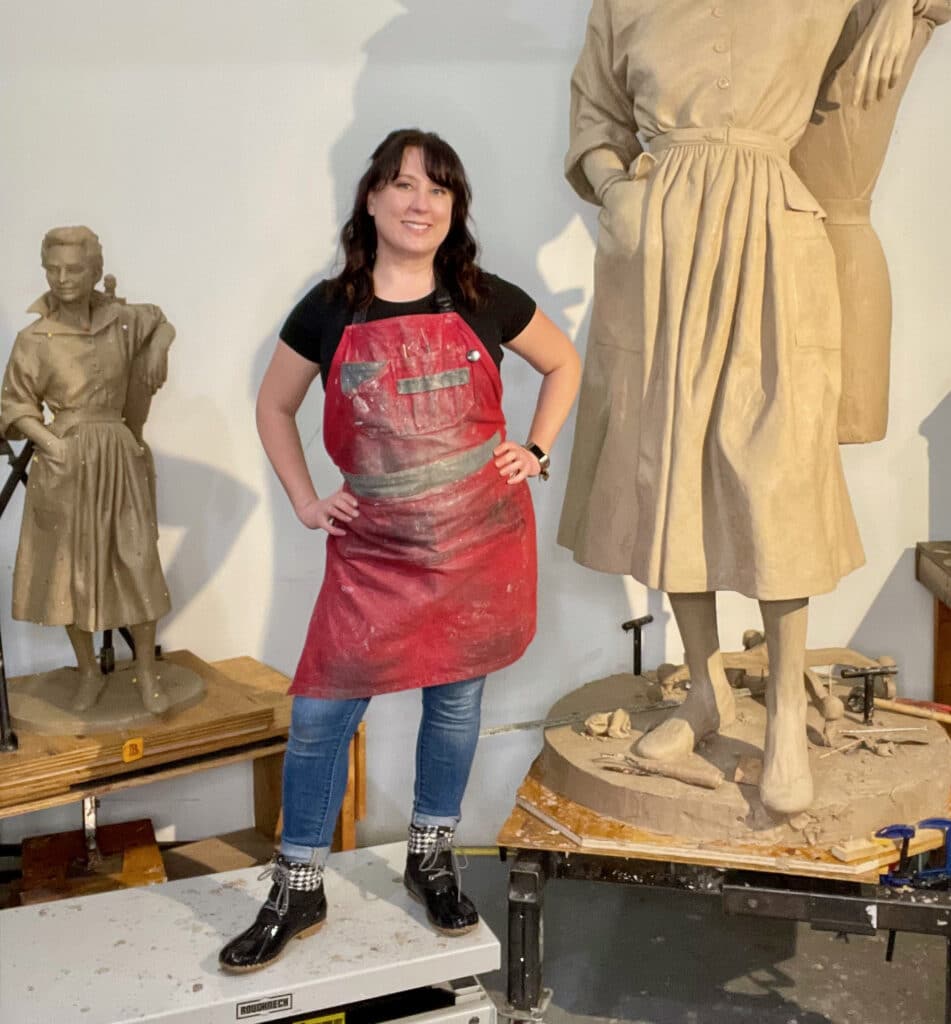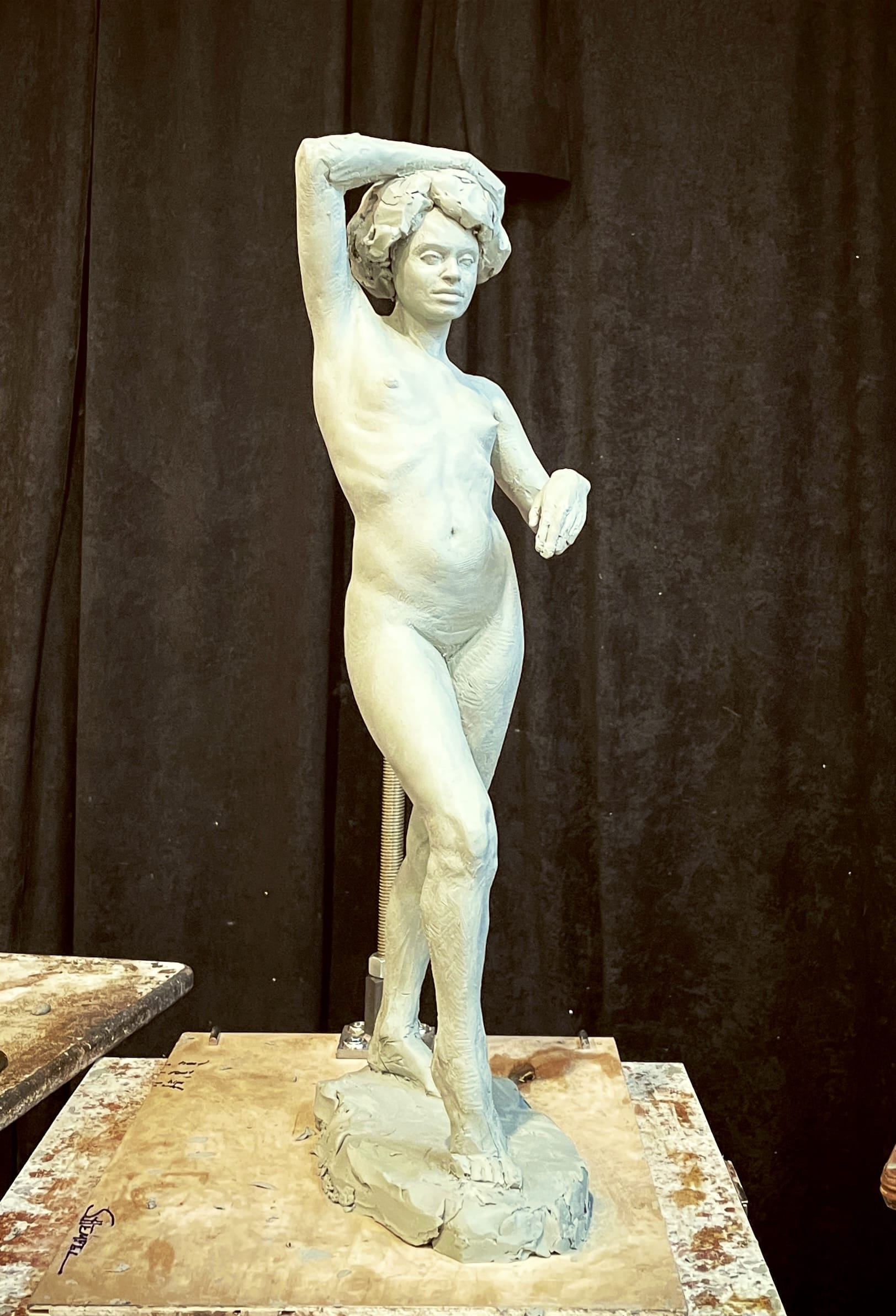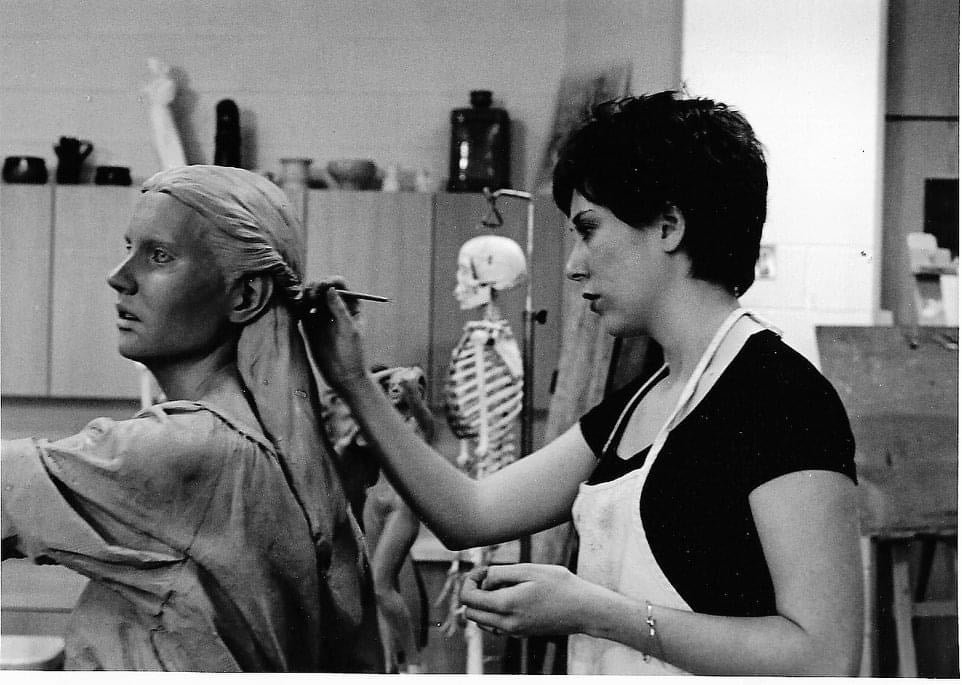What kind of clay do you use?
Vistors to my studio most frequently ask: What’s the deal with this oil-based clay? The clay that I use in the studio is not the same as the water-based clay that most people encounter in a ceramics studio. You’ve likely heard the terms ball clay, porcelain, or terracotta. I use an oil-based clay. It’s made from dehydrated ball clay, oil and wax; and consequently cannot be placed in a kiln. When it gets hot, it melts. The benefit of this clay, called Plastilina or Plasticine, is that it never hardens completely, nor does it dry out. Plasticine is considerably more expensive than ceramic clay (ball clay) and terracotta, pound for pound, but it can be used again and again.
If it never dries and you can’t place it in a kiln, how do you finish your sculpture?
In order to finish a sculpture made from plastilina, I must make a mold and cast it in plaster, resin or bronze. Smooth-on has excellent how-to videos that explain this process better.
Types of Oil-Based Clay
Plaxtin

I use a darker grey-colored plastilina called Plaxtin. I bought some from Lyme Academy College of Fine Arts back I 2002, but then it seemed to have disappeared from the US market. When I went to Pietrasanta, Italy back in 2006, I bought more and now have plenty to last me forever. I love Plaxtin for it’s quick work-ability and the way it grabs fingerprints and marks. It’s soft and pliable and quick to build up a portrait. The downside is that it does not become softer with heat and can dry and crumble if left too long. I have been able to revive my dried out old clay by chopping it and mixing in vegetable oil. I no longer use this for larger commissions because it dries out, but prefer it for portraits.

J-Mac Classic Clay
I predominately use J-Mac Classic Clay. I prefer the 2AB200 Series in soft. This clay is quite hard, so even the soft is more firm than the Plaxtin. J-Mac is perfect for large commissions. It sticks to itself, it doesn’t crack or crumble, and it’s great for detail work and bas-relief. If you like a more expressive, softer look you have to make sure that it’s kept quite warm. It’s easy enough to build a warming cabinet from plywood, insulation and lightbulbs. Mine has a thermostat that keeps the clay at 101°F. This clay is sulfur-free and has a neutral smell. It is compatible with silicone molds and easily scrapes off of surfaces.


Armatures
Since plasticine cannot be fired in a kiln, I sculpt over an aluminum armature to hold the shape. I buy 12″ and 18″ figure armatures from Sculpture House or Sculpture Depot. Sculpture Depot also has great animal armatures. I have purchased 24″ armatures from other sculptors and have made plenty of my own over the years. Very small armatures are easy to make and very large figures require heavier supports and usually involve metal pipes, steel, foam, and welding. I once purchased a 1/4 scale armature pre-made, but it collapsed beneath the weight of the clay, so use caution with pre-made larger armatures. Thankfully, most armatures are reusable, unless they are cut during mold-making. I keep several of different scales on hand at the studio.
Chavant

Chavant makes a nice line of different types of plastilina clay, both with sulfur and sulfur-free. My favorite is the Roma Plastilina. It is a sulfur-based clay from a 100-year-old Italian recipe. My first sculpture teacher used this clay and the smell brings me immediately back to the sculpture studio at my college. Like the J-Mac, it becomes more pliable with heat and when cool, takes a crisp detail. It’s less waxy than J-Mac and reacts well with solvents to get a great surface. The Roma comes in a few colors, but I’ve only ever seen the green in person. Sulfur-based clays need a layer of spray shellac before making a silicone mold, as there’s some reactivity. Many sculptors that I admire use this clay, but I already have 2,000 pounds of J-Mac!
Chavant also makes a clay called Le Beau Touché. I love that it looks like terracotta! It is sulfur-free and doesn’t need to be as warm as the Roma. It’s a little sticky for my taste, but it’s really the most beautiful of the clays mentioned here.
We used Chavant at one of Brian Booth Craig’s workshop. He achieves gorgeous detail with this clay.


Sarah, does this mean that if we make something during your workshop, we don’t keep it?
I have had classes where the expectation up front was that the clay would be squished at the end. It helps students focus on the process and take risks. Casting is very labor intensive and expensive, so it’s not practical to cast sculptures made during a workshop. However, I do refer students to mold-makers and casting services.
In my upcoming workshop, students will be able to take their clay portraits and armatures home. I encourage squishing it and making a new one, though!
This was really informative…I’ve got to make time to attend a workshop of yours!
Thanks! I’d love to have you at the workshop!